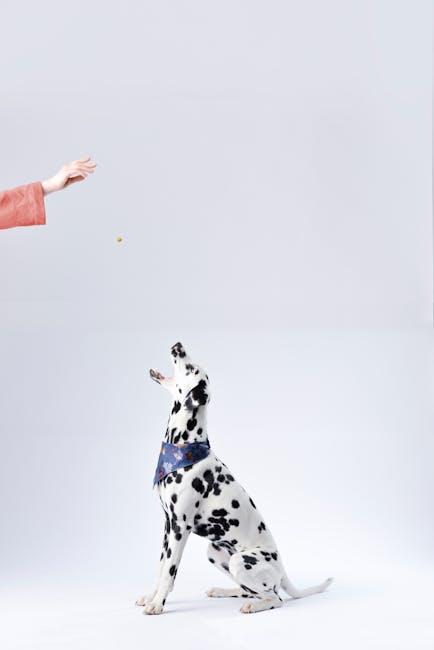Separation anxiety in dogs is a common challenge faced by many pet owners, but with the right training techniques, it is a hurdle that can be effectively managed. This guide aims to provide you with practical and compassionate strategies to help your furry friend feel more secure and comfortable when left alone. Understanding that each dog is unique, we offer a variety of approaches to suit different temperaments and needs. By fostering a sense of calm and confidence in your dog, you not only enhance their well-being but also strengthen the loving bond you share. Let’s embark on this journey together, ensuring that your beloved companion feels safe and happy, even in your absence.
Understanding the Root Causes of Separation Anxiety in Dogs
To effectively address separation anxiety in dogs, it’s essential to first identify its underlying causes. These often stem from a combination of factors that can trigger stress when a dog is left alone. Understanding these root causes can help tailor training techniques that are more effective and compassionate.
Common causes include:
- Lack of socialization: Dogs that haven’t been exposed to a variety of people, environments, and experiences may become overly attached to their owners.
- Changes in routine: Dogs thrive on routine, and any sudden changes, such as a new work schedule or moving to a new home, can lead to anxiety.
- Traumatic experiences: Past experiences, such as being abandoned or rehomed, can leave a lasting impact, making a dog fearful of being left alone.
- Genetic predisposition: Some breeds are naturally more prone to anxiety, which can manifest as separation anxiety.
By recognizing these factors, owners can begin to implement specific training techniques to alleviate anxiety, ensuring a happier and more secure environment for their furry companions.

Building a Safe and Comfortable Environment for Your Furry Friend
When it comes to ensuring your beloved canine companion feels secure and content while you’re away, there are several effective training techniques that can help. Creating a safe and comfortable environment is crucial for minimizing separation anxiety in dogs. Start by establishing a consistent routine that your dog can rely on. This includes feeding times, walks, and play sessions, all of which can help provide a sense of stability.
- Gradual Departure Training: Begin by leaving your dog alone for short periods, gradually increasing the time as they become more comfortable.
- Interactive Toys and Puzzles: Provide engaging toys that challenge their mind and keep them occupied while you’re away.
- Comfort Items: Leave a piece of your clothing with your scent, which can offer comfort and reassurance.
Additionally, practice calm departures and arrivals. Avoid making a big fuss when you leave or return home, as this can exacerbate anxiety. Instead, give your dog a treat or a toy to focus on when you depart, and offer a warm, but low-key greeting upon your return. Over time, these techniques can help your dog feel more secure and at ease, reducing their anxiety and enhancing their overall well-being.

Gradual Desensitization Techniques for Stress-Free Departures
Creating a stress-free environment for your dog during departures begins with gradual desensitization. This technique involves systematically exposing your dog to the cues and routines associated with your leaving, but in a way that they remain calm and relaxed. Start by identifying your dog’s anxiety triggers—these could be actions like picking up your keys or putting on your coat. Once identified, incorporate these actions into your daily routine without actually leaving. For example, pick up your keys and then sit back down. This helps your dog dissociate these cues from your actual departure.
As your dog becomes more comfortable, increase the intensity of the desensitization process. You can achieve this by leaving for short periods and gradually increasing the duration. Remember to keep your return calm and understated to avoid making a big event out of it. Here are a few key points to consider:
- Consistency: Practice these routines regularly to reinforce calm behavior.
- Patience: Every dog is different; progress may be slow but stay committed.
- Positive Reinforcement: Reward your dog with treats or praise when they remain calm during your practice sessions.
By incorporating these strategies into your routine, you can help alleviate your dog’s separation anxiety, leading to more peaceful and stress-free departures.
Interactive Tools and Toys to Keep Your Dog Engaged and Happy
Keeping your dog engaged with interactive tools and toys is a fantastic way to combat separation anxiety while boosting their mental and physical health. These activities not only entertain your furry friend but also help them develop problem-solving skills and burn off excess energy. Consider incorporating the following interactive options into your daily routine:
- Puzzle Toys: These toys challenge your dog’s brain and reward them with treats once they solve the puzzle. Opt for toys with varying difficulty levels to keep things exciting and adjust as your dog becomes more skilled.
- Interactive Fetch Machines: Perfect for high-energy dogs, these machines automatically launch balls for your dog to chase, allowing them to play fetch even when you’re not around.
- Treat-Dispensing Toys: Fill these toys with your dog’s favorite treats, and watch as they work to release the goodies. This encourages independent play and keeps their minds occupied.
- Agility Equipment: Set up a small agility course in your backyard or living room. This not only provides physical exercise but also strengthens the bond between you and your dog as you train together.
By incorporating these tools into your dog’s daily life, you create a stimulating environment that helps mitigate the stress of being alone, leading to a happier, healthier companion.

